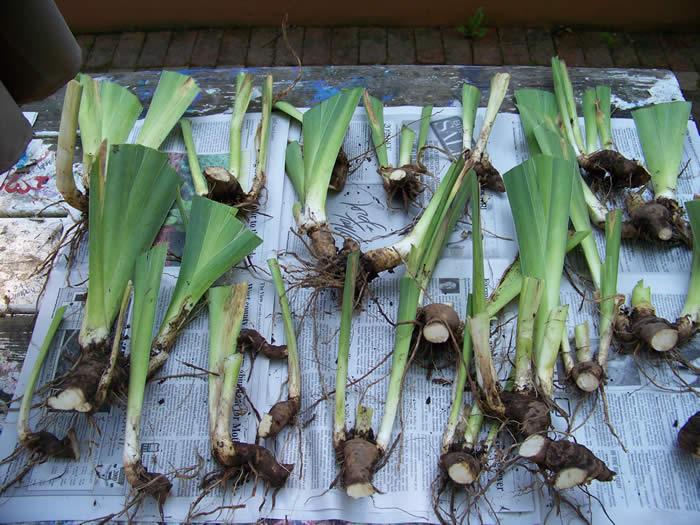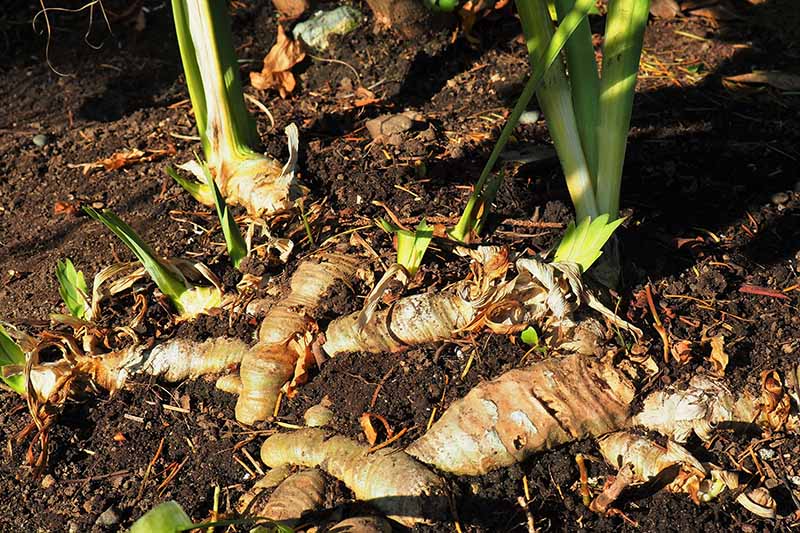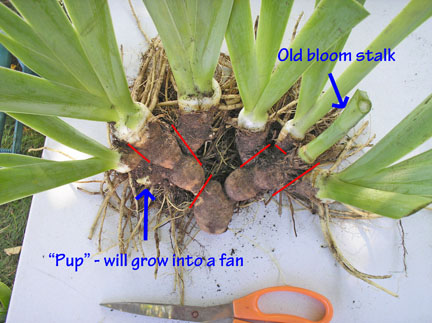Why Divide Irises: Understanding the Benefits of Rhizome Separation
Irises are one of the most popular and beautiful flowers in the garden, but they can become congested and less productive over time. Dividing iris rhizomes is a simple and effective way to promote healthy growth, encourage blooming, and increase the overall vigor of these stunning plants. By understanding the benefits of rhizome separation, gardeners can take the first step towards enjoying a thriving and vibrant iris display.
One of the primary reasons to divide irises is to alleviate overcrowding. As irises grow and multiply, their rhizomes can become packed tightly together, leading to reduced flowering and increased competition for water and nutrients. By separating the rhizomes, gardeners can provide each plant with the space it needs to grow and thrive. This, in turn, can lead to more abundant and vibrant blooms.
Another benefit of dividing irises is the reduction of disease risk. When irises are overcrowded, they become more susceptible to diseases such as root rot and leaf spot. By separating the rhizomes and providing good air circulation, gardeners can reduce the risk of disease and promote healthy growth.
In addition to promoting healthy growth and reducing disease risk, dividing irises can also encourage blooming. When irises are congested, they may produce fewer flowers or none at all. By separating the rhizomes and providing each plant with the space it needs, gardeners can encourage more blooms and enjoy a longer flowering season.
Finally, dividing irises is an excellent way to share these beautiful plants with friends and family. By separating the rhizomes and replanting the new divisions, gardeners can create new plants that can be shared with others or used to expand their own iris collection.
By understanding the benefits of rhizome separation, gardeners can take the first step towards enjoying a thriving and vibrant iris display. Whether you’re looking to promote healthy growth, reduce disease risk, encourage blooming, or share these beautiful plants with others, dividing irises is a simple and effective way to achieve your goals.
Choosing the Right Time: When to Split Iris Rhizomes for Optimal Results
Timing is everything when it comes to dividing iris rhizomes. Dividing at the right time can make all the difference in the success of the new plants. So, when is the best time to split iris rhizomes?
The ideal time to divide iris rhizomes is in the late summer to early fall, about 6-8 weeks after the blooming period. This allows the new plants to establish themselves before the winter months. Dividing in the spring can also be successful, but it’s essential to do so before new growth begins.
Weather conditions also play a crucial role in determining the best time to divide iris rhizomes. Avoid dividing during extreme weather conditions such as intense heat, drought, or heavy rainfall. Instead, opt for a period of mild weather with moderate temperatures and adequate moisture.
Another critical factor to consider is the plant’s growth stage. Irises typically go dormant in the summer months, and dividing during this time can cause stress to the plant. Wait until the foliage has died back, and the rhizomes are visible, making it easier to divide and replant.
To prepare the irises for division, start by watering the soil thoroughly a day or two before. This will make the soil easier to work with and reduce the risk of damaging the rhizomes. Next, carefully dig around the irises, making sure to get as much of the root system as possible. Gently lift the rhizomes out of the soil, taking care not to damage them.
Once the irises are out of the ground, inspect the rhizomes for any signs of disease or damage. Remove any dead or damaged tissue, and trim back the foliage to about 6-8 inches from the rhizome. This will help the new plants focus their energy on establishing a strong root system rather than producing foliage.
By choosing the right time and preparing the irises properly, you’ll be well on your way to successfully dividing and replanting your iris rhizomes. Remember to handle the rhizomes with care, and don’t hesitate to seek advice if you’re unsure about any part of the process.
Preparing for Division: Cleaning and Inspecting the Rhizomes
Before dividing iris rhizomes, it’s essential to clean and inspect them thoroughly. This step is crucial in ensuring the health and success of the new plants. Cleaning and inspecting the rhizomes helps to remove any debris, dirt, or disease that may be present, which can affect the new plants’ growth and flowering.
To clean the rhizomes, gently wash them with water to remove any dirt or debris. Use a soft-bristled brush to gently scrub away any stubborn dirt or debris. Be careful not to damage the rhizomes or disturb the roots.
Once the rhizomes are clean, inspect them for any signs of disease or damage. Look for any soft or mushy spots, which can indicate root rot. Check for any signs of pests, such as aphids or spider mites. Also, inspect the rhizomes for any physical damage, such as cuts or bruises.
If you find any diseased or damaged rhizomes, remove them immediately to prevent the spread of disease to the new plants. Cut away any affected areas with a sterile knife or pruning tool, making sure to disinfect the tool between cuts.
After cleaning and inspecting the rhizomes, use a sharp, sterile knife or pruning tool to trim away any old or dead foliage. This will help the new plants focus their energy on producing new growth rather than maintaining old foliage.
Now that the rhizomes are clean and inspected, you’re ready to begin the division process. Remember to handle the rhizomes with care, as they can be delicate. By taking the time to properly clean and inspect the rhizomes, you’ll be ensuring the best possible start for your new iris plants.
When learning how to split iris rhizomes, it’s essential to remember that cleaning and inspecting the rhizomes is a critical step in the process. By taking the time to properly prepare the rhizomes, you’ll be rewarded with healthy, thriving plants that will bloom beautifully for years to come.
The Division Process: A Step-by-Step Guide to Splitting Iris Rhizomes
Now that the iris rhizomes are clean and inspected, it’s time to begin the division process. This step is crucial in ensuring the success of the new plants. When learning how to split iris rhizomes, it’s essential to follow a step-by-step guide to ensure that the process is done correctly.
Step 1: Separate the Rhizomes
Use a sharp, sterile knife or pruning tool to separate the iris rhizomes. Gently cut through the rhizome, making sure to leave at least one growing point (the point where the leaves and roots meet) on each section. This will ensure that each new plant has the potential to produce new growth and flowers.
Step 2: Trim Old Foliage
Use a pair of scissors or pruning shears to trim away any old or dead foliage from the rhizomes. This will help the new plants focus their energy on producing new growth rather than maintaining old foliage.
Step 3: Replant the New Divisions
Plant the new divisions in a location with well-draining soil and full sun to partial shade. Space the plants 12-18 inches apart, depending on the variety. Water the soil gently but thoroughly after planting.
Step 4: Water and Mulch
Water the soil regularly during the first growing season to ensure that the new plants establish a strong root system. Mulch around the plants to retain moisture and suppress weeds.
By following these steps, you’ll be able to successfully divide and replant your iris rhizomes. Remember to handle the rhizomes with care, as they can be delicate. With proper care and attention, your new iris plants will thrive and produce beautiful blooms for years to come.
When learning how to split iris rhizomes, it’s essential to remember that the division process is a critical step in ensuring the success of the new plants. By following a step-by-step guide, you’ll be able to ensure that the process is done correctly and that your new iris plants will thrive.
Replanting and Aftercare: Tips for Ensuring Success
After dividing and replanting your iris rhizomes, it’s essential to provide the right conditions for them to thrive. Proper aftercare can make all the difference in the success of your new plants. When learning how to split iris rhizomes, it’s crucial to understand the importance of replanting and aftercare.
Choosing the Right Location
When replanting your divided irises, choose a location with well-draining soil and full sun to partial shade. Irises prefer slightly acidic to neutral soil pH, so test your soil to ensure it’s within the optimal range.
Preparing the Soil
Before replanting, prepare the soil by loosening it to a depth of about 12 inches. Add a 2-inch layer of compost or well-rotted manure to improve soil fertility and drainage.
Watering and Mulching
Water the soil gently but thoroughly after replanting. Mulch around the plants to retain moisture and suppress weeds. Keep the soil consistently moist during the first growing season, but avoid overwatering, which can lead to root rot.
Aftercare Tips
To promote healthy growth and encourage blooming, provide your divided irises with regular aftercare. Fertilize lightly in the spring with a balanced fertilizer, and deadhead spent flowers to encourage repeat blooming.
By following these replanting and aftercare tips, you’ll be able to ensure the success of your divided irises. Remember to be patient, as it may take a few months for the new plants to establish themselves and produce blooms.
When learning how to split iris rhizomes, it’s essential to understand the importance of replanting and aftercare. By providing the right conditions and care, you’ll be able to enjoy beautiful blooms from your divided irises for years to come.
Troubleshooting Common Problems: Overcoming Challenges When Dividing Irises
When dividing irises, several common problems can arise. By understanding these potential issues and knowing how to address them, you can ensure the success of your divided irises. In this section, we’ll discuss some common problems that may arise when dividing irises and provide troubleshooting tips to help you overcome these challenges.
Root Rot
Root rot is a common problem that can occur when dividing irises. This can be caused by overwatering, poor drainage, or fungal infections. To prevent root rot, make sure to plant the divided irises in well-draining soil and avoid overwatering. If you notice any signs of root rot, such as soft or mushy roots, remove the affected roots and treat the remaining roots with a fungicide.
Pests
Pests, such as aphids, whiteflies, and spider mites, can infest divided irises. To prevent pest infestations, inspect the plants regularly and treat any infestations promptly. Use organic or chemical pest control methods as needed to prevent the spread of pests.
Poor Growth
Poor growth can be a problem when dividing irises. This can be caused by a lack of light, inadequate watering, or poor soil quality. To promote healthy growth, make sure to plant the divided irises in a location with full sun to partial shade and well-draining soil. Water the plants regularly, but avoid overwatering.
Tips for Troubleshooting
When troubleshooting common problems with divided irises, keep the following tips in mind:
Monitor the plants regularly for signs of disease or pests.
Take action promptly to address any issues that arise.
Use organic or chemical control methods as needed to prevent the spread of disease or pests.
Provide the right growing conditions, including light, water, and soil quality, to promote healthy growth.
By following these troubleshooting tips, you can overcome common challenges when dividing irises and ensure the success of your divided irises.
Encouraging Blooming: How to Promote Flowering in Divided Irises
After dividing and replanting your irises, you’ll want to encourage them to bloom. With the right growing conditions, fertilization, and deadheading, you can promote healthy growth and encourage repeat blooming. In this section, we’ll discuss how to promote blooming in divided irises.
Providing the Right Growing Conditions
Irises need full sun to partial shade and well-draining soil to bloom well. Make sure to plant your divided irises in a location that receives at least 6 hours of direct sunlight per day. Also, ensure that the soil is well-draining and has a slightly acidic to neutral pH.
Fertilizing
Fertilizing your divided irises can promote healthy growth and encourage blooming. Use a balanced fertilizer that is high in phosphorus, which promotes blooming. Apply the fertilizer in the spring when the new growth appears, and again after blooming.
Deadheading
Deadheading is the process of removing spent flowers from your irises. This can encourage repeat blooming and promote healthy growth. Remove the spent flowers as soon as they fade, and cut back the flower stalk to the base of the plant.
Tips for Encouraging Blooming
Here are some additional tips for encouraging blooming in divided irises:
Water regularly, but avoid overwatering, which can lead to root rot.
Provide support for the flower stalks, especially if they are top-heavy with blooms.
Divide and replant your irises every 3-4 years to maintain their health and promote blooming.
By following these tips, you can encourage healthy growth and promote blooming in your divided irises. Remember to be patient, as it may take a few months for the new plants to establish themselves and produce blooms.
When learning how to split iris rhizomes, it’s essential to understand the importance of promoting blooming. By providing the right growing conditions, fertilizing, and deadheading, you can encourage healthy growth and promote repeat blooming in your divided irises.
Conclusion: Enjoying the Fruits of Your Labor
Dividing iris rhizomes is a simple and effective way to promote healthy growth, encourage blooming, and increase the overall vigor of these stunning plants. By following the steps outlined in this article, you’ll be able to successfully divide and replant your irises, enjoying the beautiful blooms that will result from your efforts.
Remember, dividing irises is a process that requires patience, care, and attention to detail. By taking the time to properly prepare, divide, and replant your irises, you’ll be rewarded with healthy, thriving plants that will bloom beautifully for years to come.
As you enjoy the fruits of your labor, don’t forget to share your knowledge and experience with others. Dividing irises is a great way to share these beautiful plants with friends and family, and to introduce others to the joy of growing and caring for irises.
Finally, don’t be discouraged if you encounter any challenges or setbacks along the way. With practice and experience, you’ll become more confident and proficient in your ability to divide and replant irises. And with the right care and attention, your irises will thrive and bloom beautifully, bringing joy and beauty to your garden for years to come.
By following the steps outlined in this article, you’ll be well on your way to becoming an expert in how to split iris rhizomes. Remember to stay patient, stay persistent, and always keep in mind the end goal of enjoying the beautiful blooms that will result from your efforts.









